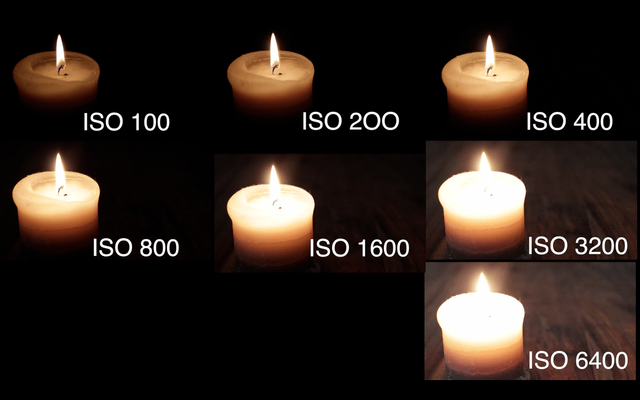📷 Understanding photography: The exposure triangle

Hello all
I realized that many of my subscribers had an interest in photography, some even have semi-professional material but don't know where to start.
So I'm going to try to explain what I know, in the simplest possible way. Do not hesitate to ask all the questions that you have in mind :)
We will start with the exposure triangle, which corresponds to the method used to obtain the desired exposure.
The exposure triangle is composed of three factors:
The aperture of the diaphragm
These are the annotations that are written on the lenses (f/2.8, f/5.6, f/8, etc...) It is the aperture diameter of the lens, it will allow you to bring in more or less light.
Compared to a garden hose, the greater the opening (small f) the higher the light output on the sensor. The aperture of the diaphragm at a direct impact on the depth of field (the clear area of the photo) but this will be the subject of another article.

Tip: on most cases there is an Aperture Priority Mode (A) on my camera, you choose Aperture and the camera adjusts all other settings to get normal exposure.
Shutter speed
This is the time during which the shutter slats remain open and it is always the same principle, the longer the shutter stays open, the longer the sensor remains exposed to light.
It is noted in tenths, hundredths or thousandths of a second. The choice of the shutter speed will mainly depend on the movement of the subject (example: Portrait of a child, bike race on weekends, etc.).

Tip: Boxes also have a shutter priority mode (S) that lets you choose the shutter speed and let the camera's processor take care of the rest.
Sensor sensitivity
At the time, we bought 100, 200, 400 ISO films. It is the sensitivity of the films, the sensor to light, the capacity it has to absorb it. I'm not going to get too much into the technique but when you increase the sensitivity of the sensor, it pre-fills the photosites electrically.
This means that it requires less light to get a properly exposed photo. The ISO 100 is the native ISO, every time you double it, it is twice as sensitive to light. From a certain threshold (800,1600,3200 ISO) it appears small dots of color on the picture, this is what we call digital noise (generated by the electric current present in the photosites).

Tip: as you can imagine, all boxes have an ISO AUTO mode to compensate for other settings.
So some examples of practice:
A fast shutter speed (low light) = a diaphragm aperture large enough to compensate or mount ISO.
A small iris (f/11, f/18) (for depth of field) = slower shutter speed (to bring in more light) or rise to ISO
A ISO at 100 to make a night shot without digital noise = a large aperture (f/2.8 - as much light as possible) and a very slow shutter speed (10,20,30 seconds) which requires the use of a tripod!
I hope the article has you more, do not hesitate to tell me if one point interests you more than another.
HODOR
Great. Thanks for sharing. I vote for you and begin to follow you. And Resteemed...
Thank you very much for your comment. Well, it's nice to know that the article is fun.
Merci pour ton poste ca me donne un aperçu des fonctions car je suis débutant et je veux en connaitre d'avantages
Merci @yangelin , la volonté d'apprendre, la curiosité sont les moteurs à une croissance rapide :) n'hésite surtout pas à me dire ce qui t’intéresse, les sujets sur lesquels tu te poses des questions. bon dimanche :)
Congratulations @paikan! You have completed some achievement on Steemit and have been rewarded with new badge(s) :
Click on any badge to view your own Board of Honor on SteemitBoard.
For more information about SteemitBoard, click here
If you no longer want to receive notifications, reply to this comment with the word
STOPWell done. I posted about colour theory a while ago. Lot's of this information is getting lost for new photographers. I was a colour printer for many years. https://steemit.com/photography/@trulafountaine/light-is-a-reflected-illusion-a-metaphor-the-theory-of-mixing-colour-with-light
Thank you very much. I appreciate your articles and photos. Good continuation :)
Congratulations @paikan! You have completed some achievement on Steemit and have been rewarded with new badge(s) :
Click on any badge to view your own Board of Honor on SteemitBoard.
For more information about SteemitBoard, click here
If you no longer want to receive notifications, reply to this comment with the word
STOP